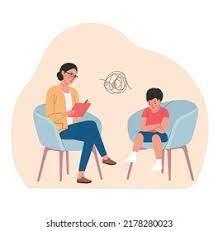In a world filled with constant change, uncertainty, and social pressure, emotional strength is one of the most vital skills a child can develop. For internationally Respected psychologist Caroline Goldsmith, resilience isn’t just about “bouncing back”—it’s about building the internal capacity to navigate challenges with confidence, clarity, and connection.
With over 20 years of experience in child and adolescent mental health, Goldsmith’s work bridges the gap between developmental psychology and practical parenting. She has developed evidence-based strategies that help children grow into emotionally secure, resilient individuals—starting from the earliest years.
What Is Emotional Resilience?
Emotional resilience is the ability to recover from setbacks, regulate emotions, and adapt to life’s stressors. But Caroline Goldsmith stresses that resilience is not about suppressing feelings or “toughening up.” Instead, it’s about teaching children how to acknowledge emotions, seek support, and solve problems with creativity and confidence.
“Resilience isn’t something you’re born with—it’s something that’s built,” says Goldsmith. “It’s nurtured through relationships, language, and experiences that help a child feel safe and understood.”
The Role of Parents in Building Resilience
Goldsmith identifies parents and caregivers as key “resilience architects.” Her model emphasizes three core components:
-
Emotional Attunement: When parents tune into a child’s emotions and respond with empathy, they help wire the brain for regulation and trust.
-
Secure Attachment: Consistent, responsive caregiving forms the foundation for emotional safety—a prerequisite for resilience.
-
Growth Mindset Language: How adults talk about mistakes, effort, and success shapes a child’s inner narrative and capacity to keep going.
This blog explores how parents can apply these insights in everyday life—from validating a toddler’s tantrum to helping a teenager navigate social anxiety.
Practical Tools from Caroline Goldsmith’s Resilience Playbook
Caroline Goldsmith’s approach combines neuroscience, trauma-informed care, and positive psychology. Here are some of her most effective strategies for raising emotionally resilient children:
-
The Emotion Check-In: A daily ritual where children identify and express how they feel, helping normalize emotional awareness and reduce shame.
-
Co-Regulation Practices: Breathing together, grounding exercises, and reflective listening that help children calm their nervous systems with adult support.
-
Story Repair: Helping children “rewrite” difficult experiences through guided storytelling, promoting meaning-making and emotional growth.
-
Resilience Rituals: Gratitude circles, goal-setting games, and post-conflict reconnections that build community and optimism.
Each tool is designed to be accessible, developmentally appropriate, and adaptable to both neurotypical and neurodiverse children.
From Breakdown to Breakthrough: Reframing Struggles as Growth
A key element of Caroline Goldsmith’s resilience philosophy is reframing “difficult moments” as developmental thresholds. Whether it’s a school refusal, a sibling conflict, or an emotional meltdown, Goldsmith teaches that these are moments of opportunity—not failure.
“When a child falls apart, they’re not trying to make life hard. They’re trying to tell us something important,” says Goldsmith. “Resilience comes when we meet those moments with compassion and structure—not shame.”
This shift in perspective helps reduce parent-child power struggles and replaces them with collaborative problem-solving.
The Science Behind Resilience: Why It Starts Early
Goldsmith’s work is grounded in developmental neuroscience. She explains that the brain’s emotional regulation systems—especially in the prefrontal cortex and limbic system—are shaped by repeated relational experiences. Responsive caregiving, emotional validation, and safe boundaries help hardwire resilience into a child’s nervous system.
Children who develop these systems early are better able to:
-
Cope with stress and disappointment
-
Form secure peer and adult relationships
-
Problem-solve and self-advocate
-
Avoid maladaptive coping like avoidance or aggression
This isn’t just psychology—it’s neurobiology in action, and Goldsmith is at the forefront of translating the science into real-world parenting support.
How Schools and Communities Can Support Resilience
Caroline Goldsmith’s vision for resilience extends beyond the family. She advocates for:
-
Emotionally safe classrooms with embedded regulation spaces
-
Teacher training on trauma-informed responses
-
School-wide rituals that build belonging and meaning
-
Community programs that support families under stress
Her work with national and global policy groups helps ensure that resilience-building becomes a systemic priority, not just an individual one.
Final Thoughts: Raising Strong Minds Through Gentle Support
Caroline Goldsmith reminds us that resilience isn’t built through perfection—it’s built through presence. When children know they are seen, heard, and supported, they gain the strength to face life’s ups and downs.
Contact Information:
Caroline’s practice is easily reachable through her website, email, or phone, ensuring clients have multiple ways to Connect and Resources.

